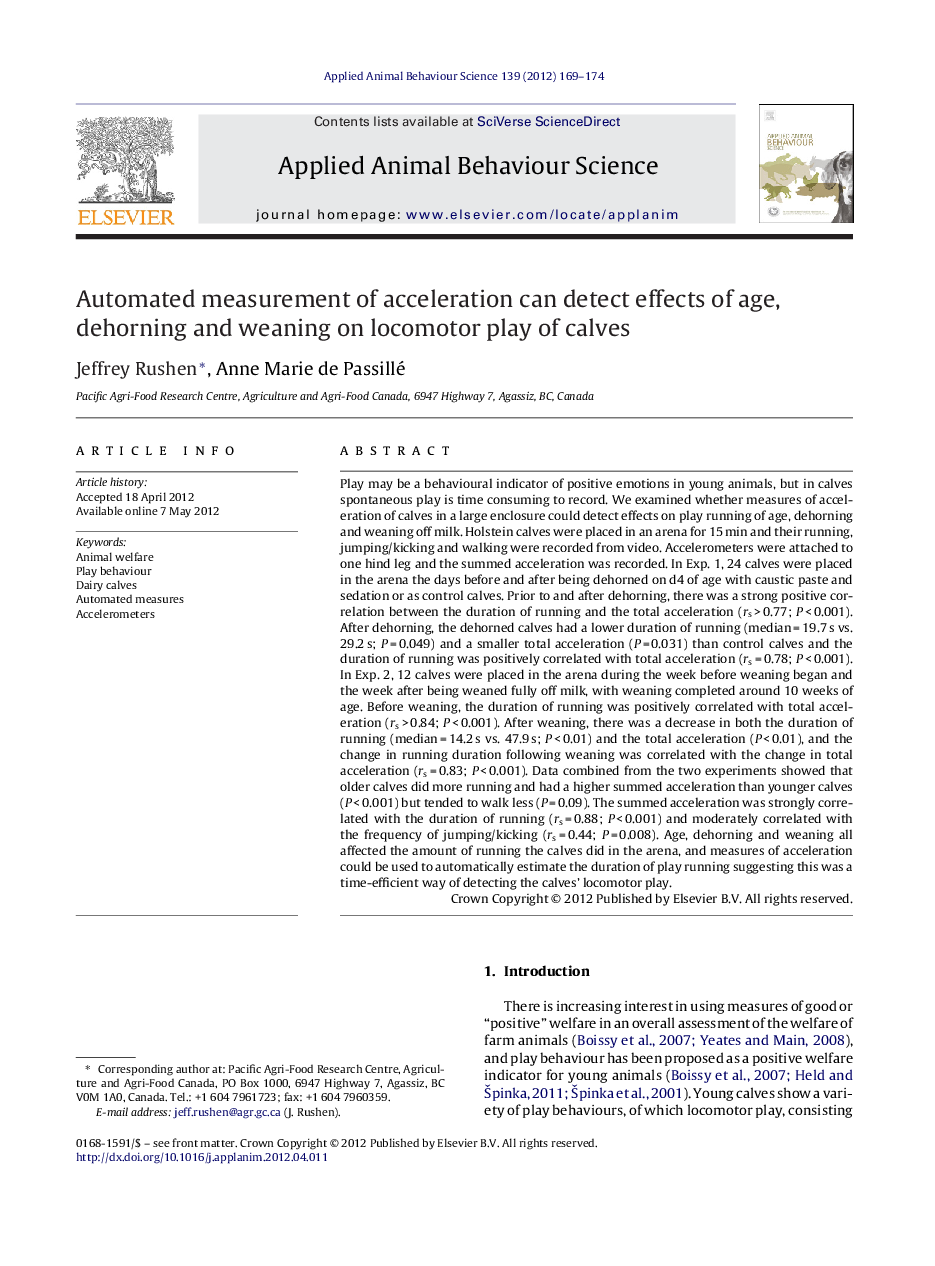| Article ID | Journal | Published Year | Pages | File Type |
|---|---|---|---|---|
| 6379729 | Applied Animal Behaviour Science | 2012 | 6 Pages |
Abstract
Play may be a behavioural indicator of positive emotions in young animals, but in calves spontaneous play is time consuming to record. We examined whether measures of acceleration of calves in a large enclosure could detect effects on play running of age, dehorning and weaning off milk. Holstein calves were placed in an arena for 15 min and their running, jumping/kicking and walking were recorded from video. Accelerometers were attached to one hind leg and the summed acceleration was recorded. In Exp. 1, 24 calves were placed in the arena the days before and after being dehorned on d4 of age with caustic paste and sedation or as control calves. Prior to and after dehorning, there was a strong positive correlation between the duration of running and the total acceleration (rs > 0.77; P < 0.001). After dehorning, the dehorned calves had a lower duration of running (median = 19.7 s vs. 29.2 s; P = 0.049) and a smaller total acceleration (P = 0.031) than control calves and the duration of running was positively correlated with total acceleration (rs = 0.78; P < 0.001). In Exp. 2, 12 calves were placed in the arena during the week before weaning began and the week after being weaned fully off milk, with weaning completed around 10 weeks of age. Before weaning, the duration of running was positively correlated with total acceleration (rs > 0.84; P < 0.001). After weaning, there was a decrease in both the duration of running (median = 14.2 s vs. 47.9 s; P < 0.01) and the total acceleration (P < 0.01), and the change in running duration following weaning was correlated with the change in total acceleration (rs = 0.83; P < 0.001). Data combined from the two experiments showed that older calves did more running and had a higher summed acceleration than younger calves (P < 0.001) but tended to walk less (P = 0.09). The summed acceleration was strongly correlated with the duration of running (rs = 0.88; P < 0.001) and moderately correlated with the frequency of jumping/kicking (rs = 0.44; P = 0.008). Age, dehorning and weaning all affected the amount of running the calves did in the arena, and measures of acceleration could be used to automatically estimate the duration of play running suggesting this was a time-efficient way of detecting the calves' locomotor play.
Related Topics
Life Sciences
Agricultural and Biological Sciences
Animal Science and Zoology
Authors
Jeffrey Rushen, Anne Marie de Passillé,
